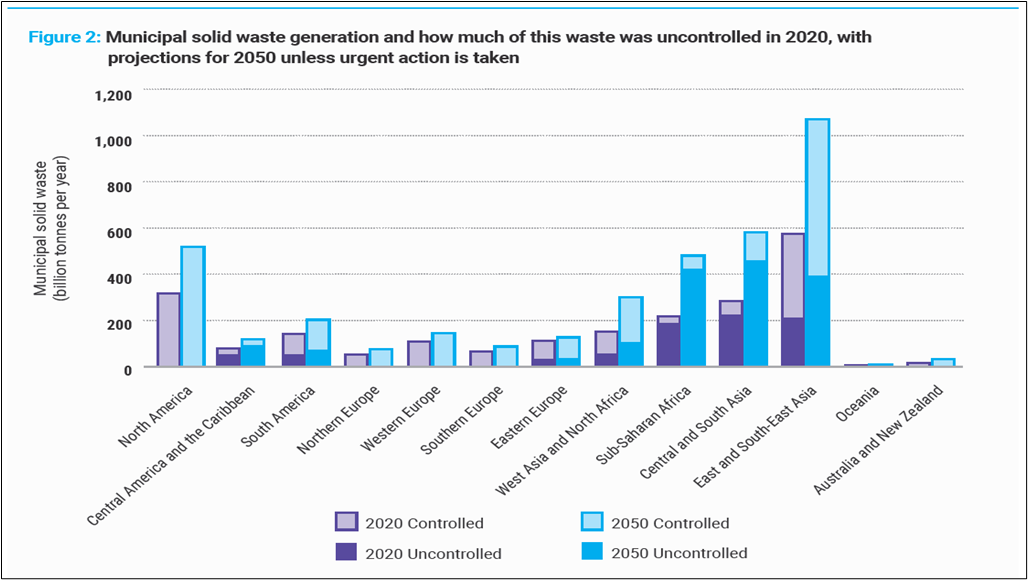- Courses
- GS Full Course 1 Year
- GS Full Course 2 Year
- GS Full Course 3 Year
- GS Full Course Till Selection
- Answer Alpha: Mains 2025 Mentorship
- MEP (Mains Enrichment Programme) Data, Facts
- Essay Target – 150+ Marks
- Online Program
- GS Recorded Course
- Polity
- Geography
- Economy
- Ancient, Medieval and Art & Culture AMAC
- Modern India, Post Independence & World History
- Environment
- Governance
- Science & Technology
- International Relations and Internal Security
- Disaster Management
- Ethics
- NCERT Current Affairs
- Indian Society and Social Issue
- NCERT- Science and Technology
- NCERT - Geography
- NCERT - Ancient History
- NCERT- World History
- NCERT Modern History
- CSAT
- 5 LAYERED ARJUNA Mentorship
- Public Administration Optional
- ABOUT US
- OUR TOPPERS
- TEST SERIES
- FREE STUDY MATERIAL
- VIDEOS
- CONTACT US
GLOBAL WASTE MANAGEMENT OUTLOOK 2024
GLOBAL WASTE MANAGEMENT OUTLOOK 2024
04-03-2024
- The Global Waste Management Outlook 2024 (GWMO 2024), co-published by UNEP and ISWA (International Solid Waste Association), examines global waste management trends and costs.
- The report ‘Turning rubbish into a resource: Global Waste Management Outlook 2024’ was launched in Feb 2024 during the 6th UN Environmental Assembly (UNEA-6) at the UNEP headquarters in Nairobi, Kenya.
- Published by: UN Environment Programme (UNEP) and International Solid Waste Association (ISWA).
- It provides an update on global waste generation and the cost of waste and its management with main focus on municipal solid waste.
- Theme of UNEA-6: "Effective, inclusive and sustainable multilateral actions to tackle the triple planetary crisis: climate change, nature and biodiversity loss, and pollution and waste."
Impact of Waste on the Environment
- Waste pollution is a significant factor in biodiversity loss, posing risks to ecosystem integrity.
- Land-disposed waste can contaminate freshwater sources with pathogens, heavy metals, and hazardous chemicals, affecting wildlife and human health.
- Open burning of waste releases Unintentional Persistent Organic Pollutants (UPOS), harmful chemicals that spread through the air and food chain, causing health issues like cancer and infertility.
Key Points from the Report
- Over 1/3rd of the world's population, about 2.7 billion people, mainly in the Global South and developing nations, lack access to waste collection services.
- Of these, 2 billion live in rural areas, while 700,000 are in urban areas.
- Approximately 540 million tonnes of municipal solid waste, representing 27% of the global total, are not collected.
- Sub-Saharan Africa (36%) and Central and South Asia (37%) have particularly low collection rates.
- Developed and upper-middle-income regions have higher waste collection rates.
- The report forecasts a significant increase in global waste generation from 2.3 billion tonnes in 2023 to 3.8 billion tonnes by 2050.
- Adopting a circular economy model could not only decrease waste generation but also yield a net gain of $108 billion per year.
- Fast-growing economies face the largest growth in waste generation, surpassing management capacities.

Pathways to Achieve a Circular Economy
- Moving towards a circular economy and adopting a zero-waste approach is essential for a safe, affordable, and sustainable future.
-
Key pathways for progress include:
- Using data and digitalization to focus on waste prevention and management.
- Banning problematic materials and enforcing mandatory schemes for polluters to pay.
- Engaging citizens in waste avoidance and segregation through inclusive approaches and behavioural science.
- Incorporating just transition principles into decision-making, valuing the informal sector, and ensuring gender sensitivity.
- Developing national expertise to create policies that suit each country's context and maximize waste reduction benefits.
Recommendations:
- National governments can enact/bring legislation to promote zero waste business models.
- Integrated policies and support for municipalities, small and medium-sized enterprises (SMEs).
- Waste reduction commitments can attract climate finance.
- Municipalities can reduce waste and make waste management affordable by involving informal waste workers and recognizing women's influence.
- Everyone can contribute by preventing unnecessary waste through reuse, waste segregation, home composting, and supporting zero waste enterprises.
Major Innovative Solutions for Waste Management
- Recycling Technologies
- Robotic Waste Sorting
- Biodegradable Materials
- Zero Waste Strategies
- Consumer Education
Waste-to-Energy (WtE)
Waste-to-energy (WtE) include technologies converting non-recyclable waste into usable energy forms like electricity and heat, mainly through direct combustion or gas production.
Government Efforts for Waste Management
Initiative |
Description |
|
Extended Producer Responsibility (EPR) Mechanism |
|
|
Increased Waste Processing Capacity |
|
|
Swachh Bharat Mission for Solid Waste Management |
|
|
Waste Management Rules and Guidelines |
|
Plastic Waste Management Amendment Rules, 2022
|



